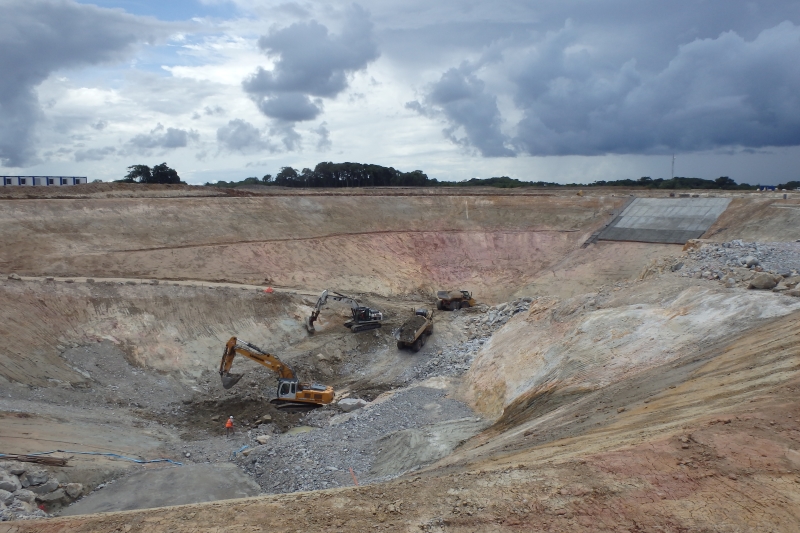The Ariane 6 project aims to develop a new launch unit, with the main objective of providing low-cost independent access to space for Europe. The Ariane 6 programme was undertaken following the conclusions of the European Space Agency Ministerial Council meeting on December 2, 2014. The Ground Segment development programme is managed by the CENTRE NATIONAL D’ÉTUDES SPATIALES (CNES), based in Toulouse. The ECLAIR 6 consortium, with EIFFAGE GENIE CIVIL as lead contractor, is responsible for the construction of the infrastructure of the new launch complex (ELA4). The declaration of the Ariane 6 programme includes a schedule with a first launch end of 2020.
The new launch unit is located at the Guyana Space Centre, in Kourou. The space centre is on the former coastal plain of Guyana, and the ELA4 site itself is in a savannah zone. The former coastal plain consists of marine deposits of the Coswine series (sands and variegated clays), sandy deposits and silty deposits with lateral variation of facies, resulting from Quaternary sea level changes. These recent deposits overlay granitic material, encountered in the form of multicoloured and often micaceous rock breakdown products, over the ancient bedrock made of plutonic or grainy metamorphic rocks, showing surface weathering to a depth of around ten centimetres.
Despite a subhorizontal spatial distribution of the top of the granular disintegration, the ancient bedrock presents abrupt level variations on the scale of the site.
EIFFAGE GENIE CIVIL entrusted TERRASOL with the geotechnical detailed design of the structures, including frequent visits for follow-up of the works on site.
The high level of heterogeneity of the soils is the source of one of the main geotechnical hazards of the project; the additional investigations during construction phase focused on reducing this uncertainty. The length of the piles under the various structures (launcher assembly building, water tower, mobile gantry crane, etc) will thus be adjusted during construction.
And the recent unconsolidated formations raise the main geotechnical issues for the shallow foundations.
Although the site is not located in a seismic area, the thrust of the launcher on lift-off requires a verification (non critical) of the foundations under dynamic loading.
Lastly, the flame trenches under the future Ariane 6 launchpad will be equipped with foundations to a depth of 30 m below groundlevel. Their construction involves the opening of a large “mixed” excavation, with intermediate berms, down to the bedrock, where the excavation is continued by blasting. A watertight barrier, consisting of a bentonite-cement mixture, is executed using a clamshell grab and extended by rock grouting in order to ensure dry conditions for the earthworks.
Terrasol’s achievements:
- Follow-up of additional soil investigations
- Study of the deep and shallow foundations for the various facilities
- Accounting for dynamic loading (thrust of the launcher on lift-off)
- Study of the excavation for the flame trenches
- Follow-up of the works on site
 Agent Access
Agent Access 




